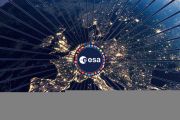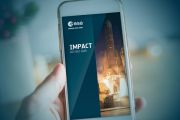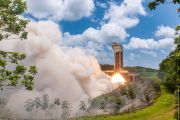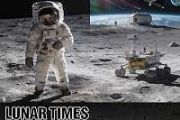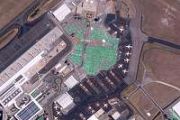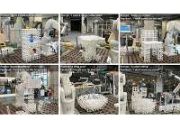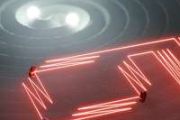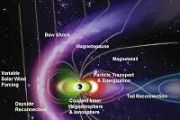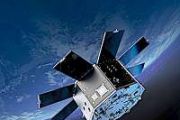
Copernical Team
German cabinet signs off plans to allow carbon capture
 The German cabinet on Wednesday signed off on plans to authorise carbon capture as part of a drive to reduce CO2 emissions, but climate campaigners slammed the move as illusory and impractical.
The government wants to approve the technology to help counter emissions in heavily polluting industries, such as the cement and lime industries, according to the Economy Ministry.
Under a planne
The German cabinet on Wednesday signed off on plans to authorise carbon capture as part of a drive to reduce CO2 emissions, but climate campaigners slammed the move as illusory and impractical.
The government wants to approve the technology to help counter emissions in heavily polluting industries, such as the cement and lime industries, according to the Economy Ministry.
Under a planne Metaspectral and Armada Partner for Remote Real-Time AI Analysis of Hyperspectral Imagery
 Metaspectral, a company specializing in computer vision and remote sensing through deep learning and hyperspectral imagery, has announced a partnership with Armada, a leader in edge computing technology.
"Through this partnership, we can bring real-time AI analysis of hyperspectral imagery to remote areas by leveraging Armada's physical data processing and connectivity infrastructure capab
Metaspectral, a company specializing in computer vision and remote sensing through deep learning and hyperspectral imagery, has announced a partnership with Armada, a leader in edge computing technology.
"Through this partnership, we can bring real-time AI analysis of hyperspectral imagery to remote areas by leveraging Armada's physical data processing and connectivity infrastructure capab Redwire boosts AI investment for enhanced space domain awareness
 Redwire Corporation (NYSE: RDW), a leader in space infrastructure for the next generation space economy, announced an expanded investment in its artificial intelligence (AI) strategy. The company is funding research projects through a newly formed coalition that focuses on the use of AI in space operations. Redwire is one of the founding corporate sponsors of The Center for AEroSpace Autonomy Re
Redwire Corporation (NYSE: RDW), a leader in space infrastructure for the next generation space economy, announced an expanded investment in its artificial intelligence (AI) strategy. The company is funding research projects through a newly formed coalition that focuses on the use of AI in space operations. Redwire is one of the founding corporate sponsors of The Center for AEroSpace Autonomy Re Legal Framework for Military Space Operations Detailed in New Manual
 Humans have always been explorers, making space the next frontier. But what laws govern outer space? Is it a lawless expanse?
Duncan Blake, a lecturer at UNSW Canberra, emphasizes that space is not without rules. The Woomera Manual on the International Law of Military Space Activities and Operations (Woomera Manual) aims to clarify the application of existing international laws to military
Humans have always been explorers, making space the next frontier. But what laws govern outer space? Is it a lawless expanse?
Duncan Blake, a lecturer at UNSW Canberra, emphasizes that space is not without rules. The Woomera Manual on the International Law of Military Space Activities and Operations (Woomera Manual) aims to clarify the application of existing international laws to military First Annual Space Piracy Conference Scheduled for February 2025
 The Center for the Study of Space Crime, Policy, and Governance (CSCPG) announced it will present the first annual Space Piracy Conference on February 11 and 12, 2025. This by-invitation-only symposium will take place in Annapolis, Maryland. The conference will gather leading policy thinkers, financiers, executives, and entrepreneurs to discuss the risks of piracy in space and potential solution
The Center for the Study of Space Crime, Policy, and Governance (CSCPG) announced it will present the first annual Space Piracy Conference on February 11 and 12, 2025. This by-invitation-only symposium will take place in Annapolis, Maryland. The conference will gather leading policy thinkers, financiers, executives, and entrepreneurs to discuss the risks of piracy in space and potential solution Young Student Explores Future Potential of Radioisotope Power Systems
 Power to Explore is a NASA essay writing competition organized by Future Engineers. It invites K-12 students to envision an RPS-powered space mission to a "dark, dusty, or distant" destination.
In 250 words or less, we were asked to describe:
+ the mission destination and goals br>
+ the importance of radioisotope power systems in the mission br>
+ our unique "power" that will help
Power to Explore is a NASA essay writing competition organized by Future Engineers. It invites K-12 students to envision an RPS-powered space mission to a "dark, dusty, or distant" destination.
In 250 words or less, we were asked to describe:
+ the mission destination and goals br>
+ the importance of radioisotope power systems in the mission br>
+ our unique "power" that will help AST SpaceMobile and Verizon Plan Nationwide Coverage with Space-Based Cellular Service
 AST SpaceMobile, Inc. (NASDAQ: ASTS), and Verizon (NYSE, NASDAQ: VZ) have announced a strategic partnership with a $100 million commitment from Verizon to provide direct-to-cellular AST SpaceMobile service for Verizon customers when needed.
"This new partnership with Verizon will enable AST SpaceMobile to target 100% coverage of the continental United States on premium 850 MHz spectrum wit
AST SpaceMobile, Inc. (NASDAQ: ASTS), and Verizon (NYSE, NASDAQ: VZ) have announced a strategic partnership with a $100 million commitment from Verizon to provide direct-to-cellular AST SpaceMobile service for Verizon customers when needed.
"This new partnership with Verizon will enable AST SpaceMobile to target 100% coverage of the continental United States on premium 850 MHz spectrum wit Innovative Startups Join South Australia's Space Ecosystem
 Four innovative space startups from around the globe have joined South Australia's Venture Catalyst Space program. This initiative supports early-stage technology-based space startups in scaling their businesses.
Since its inception in 2018, Venture Catalyst Space has supported 36 startups, helping them secure $31 million in investments and grants and create over 220 space jobs. The progra
Four innovative space startups from around the globe have joined South Australia's Venture Catalyst Space program. This initiative supports early-stage technology-based space startups in scaling their businesses.
Since its inception in 2018, Venture Catalyst Space has supported 36 startups, helping them secure $31 million in investments and grants and create over 220 space jobs. The progra NanoAvionics Completes Standardization of Nano- and Microsatellite Buses
 During a live broadcast, Kongsberg NanoAvionics ("NanoAvionics") announced the full standardization of its nano- and microsatellite buses. This move aims to cut lead times to as little as four months for bus manufacturing, reduce costs, and enhance reliability. The standardization enables quicker and more cost-effective mission launches. For missions with specific requirements, NanoAvionics cont
During a live broadcast, Kongsberg NanoAvionics ("NanoAvionics") announced the full standardization of its nano- and microsatellite buses. This move aims to cut lead times to as little as four months for bus manufacturing, reduce costs, and enhance reliability. The standardization enables quicker and more cost-effective mission launches. For missions with specific requirements, NanoAvionics cont New mapping technique enhances lunar surface analysis
 Researchers at Brown University have developed a new approach to mapping the Moon's surface, offering improved precision and efficiency. The study, published in the Planetary Science Journal, introduces enhancements to the shape-from-shading technique, which helps create detailed models of lunar terrain by analyzing light reflections.
The technique, refined by Brown scholars Benjamin Boatw
Researchers at Brown University have developed a new approach to mapping the Moon's surface, offering improved precision and efficiency. The study, published in the Planetary Science Journal, introduces enhancements to the shape-from-shading technique, which helps create detailed models of lunar terrain by analyzing light reflections.
The technique, refined by Brown scholars Benjamin Boatw 





